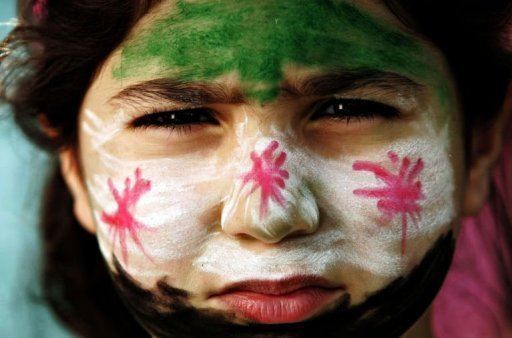
Syria children suffer brunt of fight and need help as conditions worsen on ground
Save the Children charity seeking funds to secure emergency needs
Syrian Children Out in the Cold
MarketWire
Fears are growing for Syrian children and families hit by freezing winter weather as huge funding shortages endanger relief operations in the region, Save the Children has warned.
A new report published by the aid agency, Out in the Cold, documents the desperate steps that children in Iraq, Lebanon and Jordan are taking to survive increasingly bitter weather in the region, with snow and sub-zero temperatures expected to hit many areas in the coming weeks. The current aid shortfall is over $200 million — half the total estimated needs — for Syrian refugees, hindering relief efforts and putting families at risk. Read the report.
Among the heart-rending testimonies given to Save the Children are children huddling three to a blanket, sleeping in makeshift shelters made of billboards and falling sick as temperatures plunge in the region.
“The heartbreaking stories we’re hearing from Syrian refugees as winter approaches underline the fact that this crisis is rapidly deteriorating. Every day new refugees are arriving, but the funding required to give them the help they need is simply not there,” said Save the Children
International’s Chief Executive, Jasmine Whitbread.
“The international community needs to match its diplomatic and security concerns with funding to help children. Unless there is a surge in funding, thousands of children are going to spend a bitter winter without proper shelter from the cold, and many will become sick as a result.” Some 400,000 refugees are living in tents, barns, unfinished buildings and other temporary shelters ill-equipped to provide protection from the cold. Many fled during summer months with only the clothes on their backs, and often children lack warm jackets and clothes to withstand the winter. In Iraq, the only footwear most refugee children have is the flip-flops they fled in.
In Jordan, parents are going into debt to provide basic clothing for their children, and in Lebanon, where there are no camps, high rents are preventing families finding or keeping adequate shelter. One group of refugees in the Beka’a Valley is facing freezing temperatures in shelters constructed from tarpaulins.
There are now fears that infections and diseases could spread amongst refugee children, who are particularly vulnerable to the cold weather, and are living in close proximity in refugee settlements.
- “We have one blanket. We don’t have anything else. We don’t even have clothes. We received one blanket and we’re three. When we cover ourselves with the blanket, it’s not enough for us. We’re getting sick — I’m getting sick.” Ali, 11, living in an abandoned school.
- “When I feel cold I start shivering — even now I feel cold. My throat hurts, and I feel like I have the flu. We need medicines.” Ines, 8, living in a shelter made of billboards.
- “When it rains outside, you really feel the cold. It’s really bad for you. It’s easy to get sick when you’re freezing all the time.” Rami, 11, living in a tent in a refugee camp.
- “I have two daughters that are sick because of the cold. All my children are sick.” Nadia, 30, mother of five-month-old child, living in an unfinished building.
Meanwhile, the international aid response remains only around half funded for those who have fled the country, prompting fears that the aid effort will fail to deliver help to many of those who urgently need it. Numbers of refugees pouring out of Syria have already far outstripped official expectations published earlier in the year.
Save the Children is on the ground in Lebanon, Iraq and Jordan, helping thousands of children who have fled to neighbouring countries recover from their experiences and prepare for the coming winter. The agency has launched an appeal for $35.9 million to help fund its work in the region.
Save the Children is the leading independent organization for children in need, with programs in more than 120 countries, including the United States. We aim to inspire breakthroughs in the way the world treats children, and to achieve immediate and lasting change in their lives by improving their health, education and economic opportunities. In times of acute crisis, we mobilize rapid assistance to help children recover from the effects of war, conflict and natural disasters. Follow us on Twitter and Facebook.
Leave a Reply